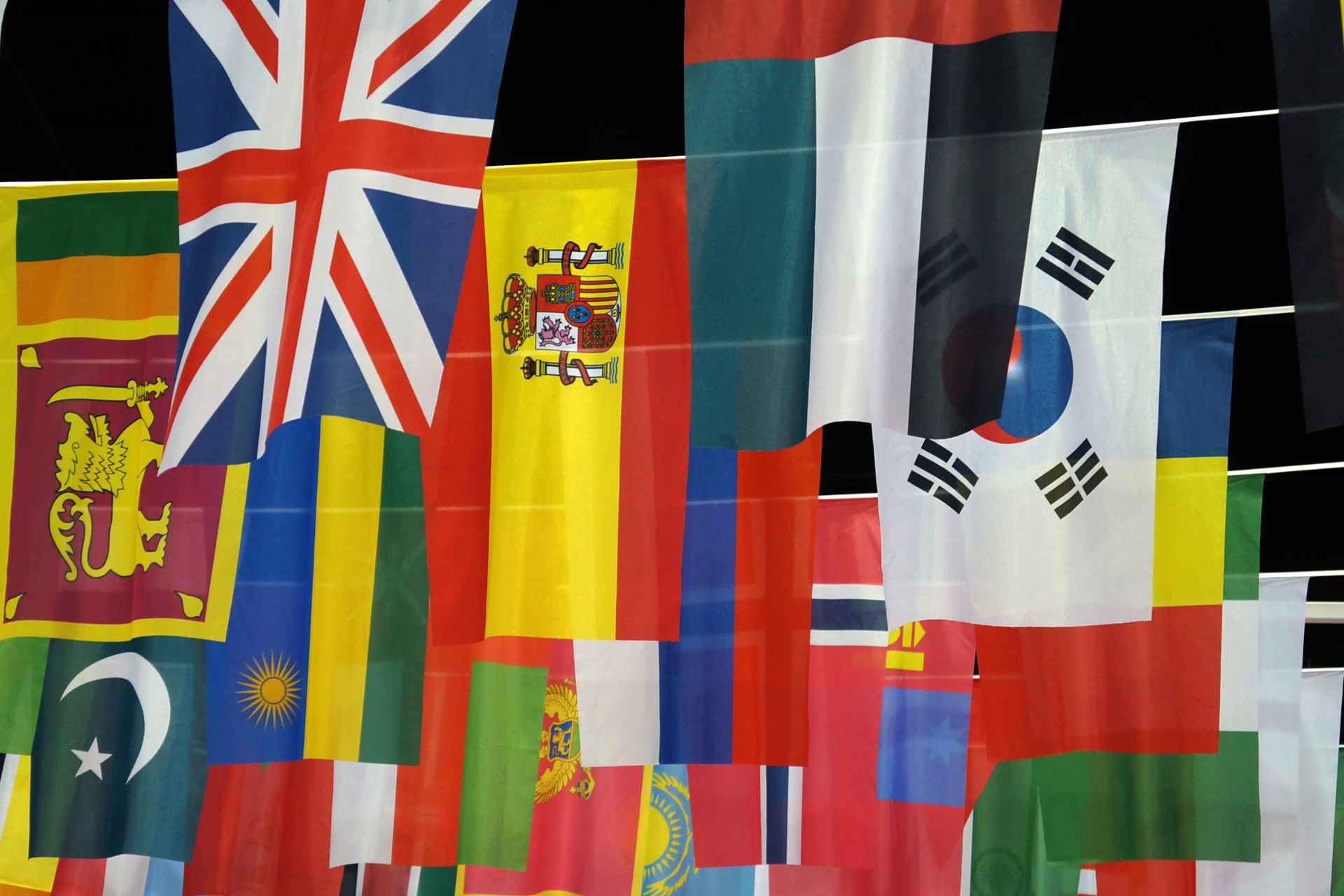Making Your Website Layout Multilingual: Benefits of Designing a Multilingual Website
Having an online presence is essential for any business. To reach out to a wider range of target customers, ensuring your website is multilingual should be one of your top priorities. Not only can it help to expand your customer base, but making your website layout multilingual also offers a number of advantages.
In this blog post, we’ll explore the benefits of having a multilingual website in terms of website layout design, and provide practical advice on how to go about creating one.
When it comes to website layout design, a multilingual website can provide both aesthetic and practical benefits. By designing a multilingual website, you are able to create an attractive website that appeals to a larger audience. Not only can this help to increase customer engagement, but it can also make your brand stand out from the competition and aid your search engine optimization (SEO) efforts.

It can also offer a more intuitive user experience, as users can navigate through the website in their native language. This is seen as especially helpful when dealing with e-commerce websites, as customers may feel more comfortable if they can interact with the website in their own language.The potential of designing a multilingual website for website layout design is immense. With the right approach, a multilingual website can help you boost customer engagement, improve SEO, and provide a more intuitive user experience—all of which are crucial for success in the digital landscape.
So, let’s take a closer look at how to make your website layout multilingual and take advantage of the many benefits it offers.
Understanding the Benefits of Designing a Multilingual Website
Designing a multilingual website for your business can prove to be a great investment. It ensures that your website is accessible to a global audience, which can help you expand your customer base significantly.

Not only that, but the design of your website can also reflect the culture and values of your business. With a multilingual website, you can make sure that your content is properly localized and that it resonates with your target market.
Another benefit of designing a multilingual website is that it can help you build trust with your international customers. By providing content in their native language, you are giving them a better understanding of your business, which can help them feel more confident about making a purchase. Additionally, by making sure that all of your content is accurate and localized, you can avoid any potential language barriers that may come up when interacting with potential customers.
Identifying Your Target Audience
When designing a multilingual website, it is essential to consider your target audience. It is important to recognize the languages and regions that you are targeting. Knowing the geographic location and language of your target audience will help you determine which language translation you should feature on the website. You should also take into account the cultural and regional differences between the countries you are targeting.
By creating content tailored to the specific language and culture of each region, you can make your website more accessible and increase user engagement.
In addition, you should also think about how to make the user experience more enjoyable. By creating a unique design for each language, you can provide users with an immersive experience. Different layout elements, such as fonts, color schemes, and navigation menus, can help your website stand out from the competition.
When designing a multilingual website, it is important to consider how to keep the user experience consistent across different languages. By making sure that each language has a unique, yet cohesive design, you can create a website that is both attractive and easy to navigate.
Identifying Languages for Your Website
Identifying the languages for your website can be an overwhelming task. Whether you’re introducing a website in multiple languages or targeting a specific language-speaking audience, it’s important to take the time to choose the right languages. By carefully selecting the languages you choose to support on your website, you can create a multilingual website design that will help you reach more potential customers.

Consider factors such as the location of your target audience, the size of the language-speaking population, and the amount of content and resources available in that language. Additionally, you should also consider the cost of localization services for websites that are more complex. Once you’ve identified the languages that will work best for your website, you can begin the process of creating a multilingual website design.
Choosing the Best Design Practices for Your Multilingual Website
When designing a multilingual website, there are a few key design practices to keep in mind in order to build an effective, user-friendly experience. The first is to ensure that content is broken up into modular pieces that can be easily reused and translated. This allows for a consistent design across multiple languages and ensures that content is always up to date and accurate. Additionally, be sure to consider the user’s experience when it comes to navigation.
Forcing users to click through multiple pages to find relevant content can be confusing and frustrating. Instead, make sure that navigation is intuitive across all languages and users are able to quickly find the content they need. By following these guidelines, you can ensure that your multilingual website design is effective and engaging for all users.
Leveraging Best Practices for Translating Content
When translating content for a website, it is important to follow best practices to ensure accuracy and consistency of the end product.
One of the most important steps in this process is leveraging the correct tools and technologies. By leveraging the right best practices, you can minimize the amount of effort required to maintain and manage the multilingual website design. One of the key elements of properly translating content is establishing a global team of experts to review the content.

This team should have a strong understanding of the target language, culture, and the website design. They should also have a good knowledge of specialized tools such as translation memory systems, terminology databases, and technical localization tools. These tools can be used to ensure the accuracy and consistency of the content translations.
Converting Text to Multilingual Website Format
Converting text to a multilingual website format is a great way to make your content available to more users. By making your website layout multilingual you can reach a wider audience, and reap the many benefits of a multilingual website design.
In order to make your website layout multilingual, you need to ensure that all of your text is converted to the language of your choice. This includes text throughout the website, such as navigation links, headings, and body text.
You also need to make sure that the page layout is optimized for the target language; for example, if you are translating from English to Spanish, you may need to adjust the font size as Spanish letters are usually longer than English ones.
Additionally, you may need to adjust the overall page layout and structure depending on the target language, as some languages require more space than others. Once all of this is complete, you can begin to enjoy the benefits of a multilingual website design.
Enhancing the User Experience on a Multilingual Website
Ensuring that website visitors have an enjoyable experience on a multilingual website is essential to the success of online businesses. Designing a website with multilingual capabilities ensures that customers from around the world can easily browse and interact with a website. This can be achieved through simple design changes, such as rearranging content on the page, as well as using specific language tools to enhance visitor experience.
When designing a multilingual website, it is important to consider the user interface.
This includes ensuring that users can easily find what they need, that navigation links are properly labelled in the desired language, and that any additional features are presented in a way that is consistent and easy to use.
Additionally, incorporating language-specific tools such as translation widgets and auto-detection of the user’s language can also help to enhance the website’s user experience.
Furthermore, providing support for multiple languages can make it easier for customers to understand the product or service being offered. All of these elements should be considered when designing a multilingual website in order to optimize the user experience.
Optimizing SEO for a Multilingual Website
When it comes to designing a website in multiple languages, optimizing the SEO for the multilingual website is essential. To ensure that you are getting the most out of the design, there are several factors to consider.
First, ensure that the URL structure is optimized for multiple languages. This should include using language-specific URLs and making sure that each language is easily discoverable by search engines.
Additionally, consider using a hreflang attribute to indicate the language of the content and ensure that each language is correctly indexed in search engine results. Furthermore, it is important to use the same blog focus keyword in all languages. This will help to ensure that the content is easily discoverable by search engines, regardless of the language.
Additionally, pay attention to localizing specific sections of the website, such as the contact page or the about us page. This will allow visitors to easily find the right information in their native language.
By following these steps, you can ensure that your multilingual website is optimized for SEO and deliver a better experience to your users.
The benefits of designing a multilingual website are numerous and it’s important to consider them when making your website layout. Creating a website for a global audience not only increases customer base but also builds relationships and trust with customers.
Additionally, having a multilingual website design creates a positive user experience and can increase SEO. All in all, a multilingual website design is a great way to maximize your website’s potential, increase customer engagement, and maximize ROI.

